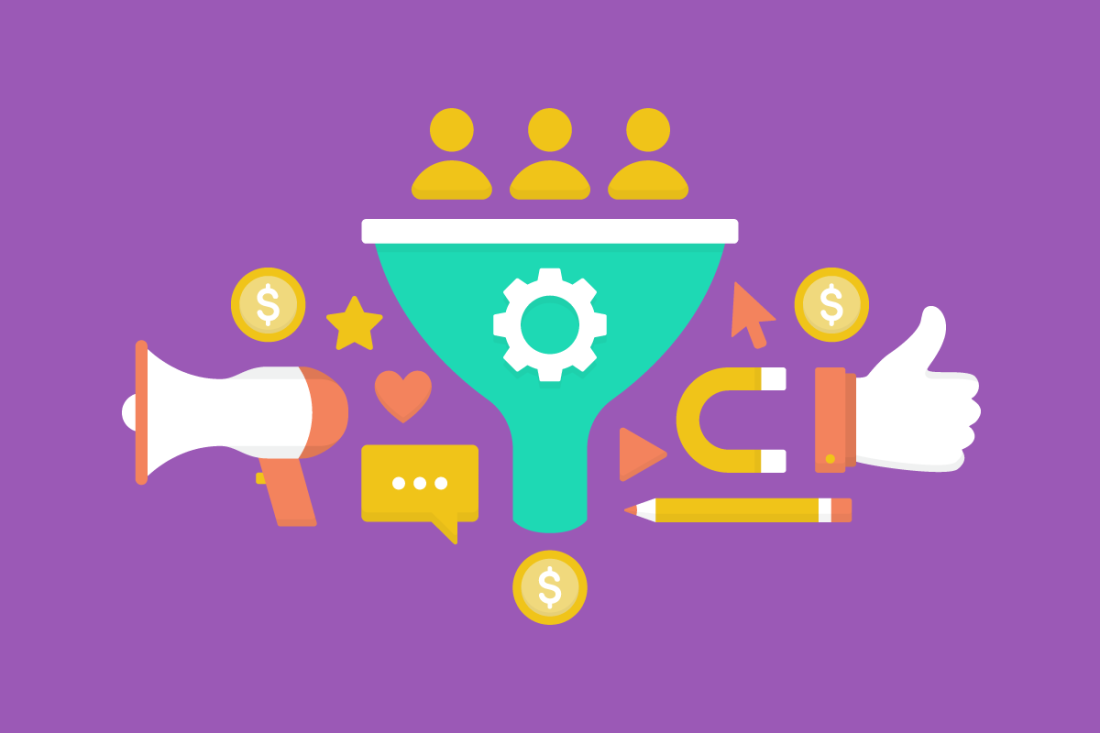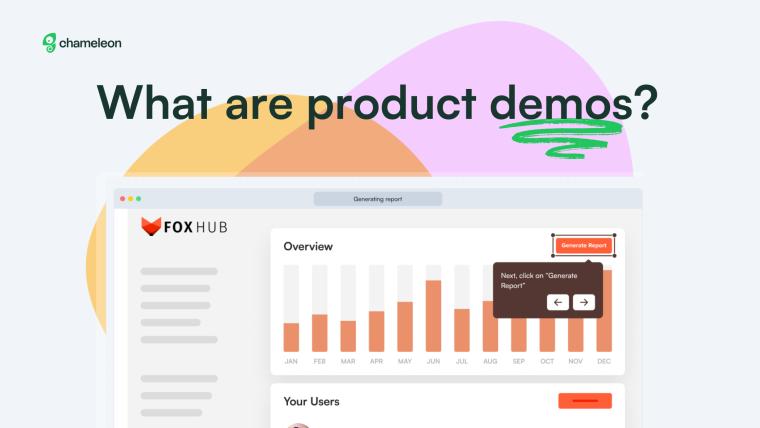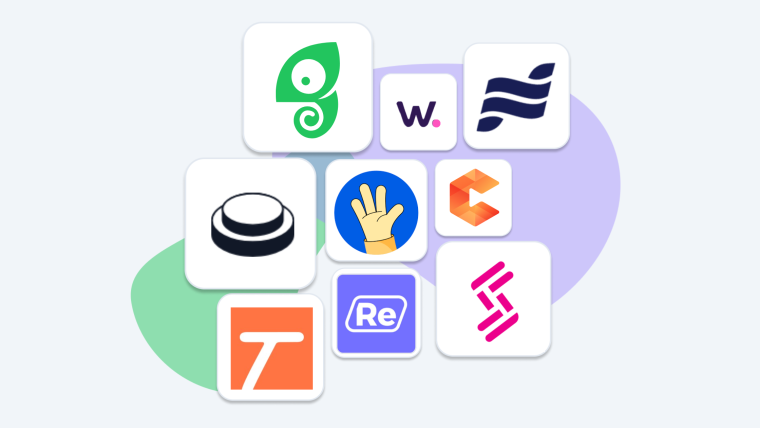The emergence of the Product Led Growth model has forever changed how we build, sell, and deliver software products to our target market. This try-before-you-buy model has also demanded that we change the way we operate a software business.
One of these ways - and the focus of this post - is the way in which we qualify our “leads.”
If you are not familiar with the concept of a Product Qualified Lead, you can learn more here, here, here… or even here. At a high-level:
A Product Qualified Lead (PQL) is a prospective account that has signed-up for a free version of your product (either a free trial or a [freemium version](/blog/making-freemium-models-work)) and reached a certain level of engagement that is indicative of their likelihood to convert to a paid account. These prospective accounts are “qualified” based on how they are engaging with your product.
This is very different from how software businesses have traditionally qualified leads and it calls for new processes and practices for any product-led software operation.
Building a PQL Process
At Sherlock, we work with a lot of companies as they build processes around this new way of qualifying leads. In many ways, it’s a fairly obvious shift for companies. But in other ways, it’s more complicated than it seems. To build an effective PQL process, you need to:
Define what qualifies as a Product Qualified Lead for your business/product;
Build a system for continuously identifying those leads (and getting them to the right people on your team); as well as
Create a program for engaging with those leads.
You can find out more about how to define and continuously identify those leads in this ebook. In some ways, that is the easy part (especially when you have a solution like Sherlock.
The next step is often more challenging: How do you build a system for engaging these leads in a way that helps drive them to success - at scale? How do you organize your teams around this effort?
There is no prescriptive solution
The first step in answering this question is to accept the fact that there is no cookie-cutter, one-size-fits-all solution for building an effective PQL process for your SaaS business. In fact, I would argue, as with any transformative initiative, trying to approach building a PQL process in a prescriptive way will doom it from the start.
The truth is you can’t just mimic what your favorite company did. You can just copy and paste a plan you saw in a recent conference session or read about in a recent blog post. For any significant change initiative, you have to approach it within the context of your organization, your existing processes, and dare I say…your company culture.
Ooooh, that sounds interesting. Let’s dig into that a bit!
SaaS Company Cultures
Our culture? What do our Friday barbecues and Slack emoji parties have to do with how we build the right PQL process?!
Well, nothing. But when I talk about “culture” in the context of building new initiatives, I’m not referring to the flowery value statements you post on your recruiting page or the names of your conference rooms. I’m referring to the activities and outcomes that dominate your focus as an organization. What dominates your mindshare as a company. Those activities (and results) that you celebrate and in which you take the most collective pride.
SaaS companies generally fit into one of these four cultural buckets:
Product culture
Marketing culture
Sales culture
Customer culture
I know, I know. You are thinking - we’re all of these!
Yes, you have all of these elements to your organization - we all do. But almost every organization has a dominant personality. Where their values most align. The things that drive most decisions, activities, celebrations, and water cooler conversations (do we still have these?!). Think about what KPIs you value most; who the “rockstars” are in your organization; which team will have the easiest time getting budgets approved.
If you think about it in this context, it shouldn't be hard for you to place your company in one of these buckets.
If you are still having trouble, here are some additional guidelines that might help:
You might have a PRODUCT culture if...
You have a PLG model (that’s working)
You pride yourself on having “no sales team” (even though you do)
The majority of your paid customers come via a self-serve model
You have at least twice as many engineers as salespeople
You actually know the names of your product designers
Your founder is an engineer/designer/product person
Major feature releases lead to Mardi Gras-like celebrations in the office
Your entire team loves your product (like…for real)
Examples:
Atlassian
Slack
Intercom
Segment
<li>Notion
Early) Hubspot
You might have a MARKETING culture if...
You celebrate top-of-funnel stats (like site visits, blog traffic, etc)
Your blog and content marketing team is so large/important that you sometimes wonder if you are actually a media company
Your founder/CEO is a Twitter celebrity
Less than half of your marketing team actually knows how to use your product
Examples:
Drift
(early) Hubspot
ProfitWell
Kissmetrics
You might have a SALES culture if...
You have twice as many salespeople as engineers
You have a gong in the office (if you have more than one, you are definitely a sales culture)
Salesforce runs your life
The whole team celebrates - not just every new deal - but quota attainment as well
You sell an enterprise product (that generally sucks)
Your head of Sales is a Salesforce alum
Examples:
Salesforce
Oracle
Zenefits
You might have a CUSTOMER culture if…
You build a CS team before you build a Sales team
You consistently feature customer stories at your all-hands meetings
Everyone knows the names of your top users (not just accounts, actual users)
Much of your marketing is built around case studies
The majority of your product roadmap is made up of customer requests
You have a user conference
Examples:
Front
Zendesk (early)
Zapier
Gusto
Survey Monkey
Hopefully, that helps you identify your dominant culture. Be honest. Don’t worry - none of these cultures are good or bad - they are just different. Think of them as Hogwarts Houses. No House is bad (even Slytherin!) - they are just different. Different personalities. Different strengths, different weaknesses.
Identifying your dominant culture is key for building new initiatives in a successful way. Designing and building new processes in a way that is counter to your culture is like swimming against the tide. Can be done…it’s just a lot harder (and less effective).
Building a PQL engagement process based on your culture
A PQL engagement process is the way in which you and your company address a new account that becomes “product qualified.” Once it has signed up for your product, found some initial value - put in the effort to become activated - and thus have shown signs that they are likely to become a paying customer.
What do you do next? How do you engage with this account? Who (if anyone) engages with the account? In what way?
This is what will define your PQL engagement process. And there are many different ways to design this process - like with anything there is more than one way to skin this cat. The things you need to consider include:
Type of engagement: High-touch or low-touch?
One of the key tenants of any PQL engagement program is “touch” - the level of direct engagement your team will have with your users.
High touch = an engagement program that includes a high level of personalized service (meaning from a human) and support for new users/accounts.
Low touch = an engagement program that relies on automated support with little or no interaction with actual humans.
Will you be encouraging new users to talk to someone on your team? Will you want them to get a demo from sales or attend a training session with your success team? Or do you want them to be pure self-serve — looking to help docs, in-app education, and generic email tips to figure things out?
Or somewhere in between. This last option is going to be the most common. There are very few SaaS businesses that can afford to support a very high-touch-oriented program and (despite popular opinion) few that can run purely on a self-serve model. Most will have some flavor of both.
Style of engagement
Will you have a more informal, personalized style or will you have a higher production-value, “branded” experience.
Content used in engagement
Will you focus on more tactical feature usage (here’s how you build a new report, or assign tasks) or will you take a more value-based, “product marketing” approach - pitching case studies, use cases, etc?
Engagement channels
It’s likely that any engagement program will utilize multiple channels, but will yours rely more on in-app messaging or email? And when it comes to email, will you use emails from a “marketing” system or will your program use more personal emails from (via Gmail/outlook)?
When should your team get involved?
This is a big decision. When and who, actually. Should your sales people be talking to accounts before they convert? Should CS get involved? If so, when?
Other considerations
Of course, there are other things to consider when designing a good PQL engagement process.
Product culture: How to build a PQL engagement process
Let’s start with the easy one.
If you have a Product culture, it is likely that you are already operating in a Product-Led model. By this I mean you have designed your product, onboarding, and activation process such that it is easy for a new account to become “qualified” without much support. In fact, it is likely you have designed your product to encourage self-serve sign-up, activation…and conversion!
Product cultures should design a PQL engagement process with these characteristics:
The goal of engagement: Paid conversion!
Type of engagement: Low touch - automated. In fact, Product cultures should look to build automated engagement programs that drive any new signup through set-up, activation - as well as through paid conversion.
Style of engagement: Product cultures should not try to build highly stylized, heavily designed, engagements (unless they have a strong design culture on the product side). Even then, this shouldn’t be a huge focus. These engagements should be highly focused on helping new accounts systematically find the most valuable features that will drive them through activation and conversion. This means these engagements should prioritize smart behavioral triggers. Product cultures will be very close to their product data, so they should be very smart about using this data to deliver engagement programs that are relevant to how users are actually using the product.
Engagement channel: Heavy in-app messaging (tours, hotspots, etc) and triggered emails.
Engagement content: The content of these engagements should focus on product/feature usage. They should focus on support docs, help videos, etc.
When should your team get involved?: This might seem controversial, but for Product cultures, sales teams should wait to become involved post-conversion. Product cultures should aim to convert the majority of their accounts to paid via self-serve channels. Your main sales efforts should focus on identifying those converted accounts that have an opportunity to grow - increase usage, upgrade to use a premium feature, will value “enterprise” functionality, etc.
Example companies: Notion or Slack.
Notion is a great example of a Product culture. Their team prioritizes the details of the product - they spent years crafting the user experience in relative obscurity (after a near-death and has continued to focus their energies on that experience. They have done a tremendous job building that experience that drives hundreds of paid conversions per month. Much like Slack, the sales efforts at Notion are mostly focused on identifying bigger opportunities in their pool of paid accounts - many times looking to consolidate separate accounts that were opened from the same company into one bigger opportunity. The sales team enters post-initial conversion.
Marketing culture: How to build a PQL engagement process
Companies with a Marketing culture are very adept at attracting a lot of “leads” - trial or free signups. It is also likely that they are very adept at funneling leads to a sales team. This means a PQL engagement program for teams with a Marketing culture will likely look like a more traditional sales-led process but will replace PQLs with their traditional SQLs. Not saying this is an easy transition, but it has a pretty natural analog in its existing processes.
Marketing cultures should design a PQL engagement process with these characteristics:
The goal of engagement: In many cases, the goal of many of these engagements will be to get the qualified account on a demo with the sales team.
Type of engagement: Hybrid - but leaning low-touch. Marketing teams should build automated programs while having sales teams reaching out to PQL accounts individually upon qualification. Again - not much different than their existing process.
Style of engagement: Marketing cultures should build out more stylized, “branded” messaging programs for new accounts. These companies are good at this and it will be important for any new engagement program to meet all the brand standards that play a major role in the culture.
Engagement channel: Mostly email - these teams will be most comfortable with email. But they should not ignore a smart, well-branded in-app messaging program as well.
Engagement content: The content of these engagements should come from a “product marketing” perspective - focusing on use cases, case studies, ebooks, etc. More high-level type of value-based content.
When should your team get involved?: As mentioned earlier, Marketing cultures are good at funneling leads to sales teams. So sales teams should become active reaching out to qualified accounts directly. They will likely be looking to get decision-makers on a call to see a demo of the product and try to identify the right use cases - the right value fit - for their business. Again, this looks a lot like a traditional process, but that’s ok. In these companies, this will be very familiar and effective.
Example companies: Drift, early Hubspot
It’s very easy to look at a company like Drift, or the early days of Hubspot, and think they operate on a purely self-serve basis. Huge marketing operations that drive trial signups which all convert to paid at a very high rate. But the truth is they have large, active sales operations and their marketing operations are exceptional in their ability to attract, qualify and funnel these leads to their sales teams so they can be most effective.
Sales culture: How to build a PQL engagement process
Companies with a Sales-dominant culture are generally selling higher-priced or more complicated solutions (but not always). They rarely drive many self-serve conversions and have an established high-touch operation - with the vast majority of their deals going through a conversation with a salesperson.
Sales cultures should design a PQL engagement process with these characteristics:
Goal of engagement: Drive demos/conversations with a salesperson.
Type of engagement: High-touch. Sales cultures can treat PQLs much like SQLs in their current process. Again, it is likely that these companies are selling a higher-priced, more complex solution, so they can provide more personalized, high-touch engagement with their PQLs.
Style of engagement: Because a lot of the engagement with PQLs here will be high-touch, it will be more personalized and informal.
Engagement channel: Mostly email - but there will also be “in-person” (meaning video conference) meetings with salespeople as part of this engagement program.
Engagement content: Much of the engagement here will be “value-based” - helping prospects find the most valuable usage of the tool for their goals/pains. And because much of the interaction your sales team will have with these new qualified leads will be based on their usage of the product, sales teams will need to become “product experts” - much more so than they would have the need to be previously.
When should your team get involved?: Again, this is a more traditional workflow, so Sales should get involved when leads become qualified by their product usage. For bigger potential opportunities, the sales team can be involved earlier - meaning these bigger potential accounts won’t need to be fully activated and engaged with the product to justify some support from the sales team. It also might be justified to bring in part of the CS team to deliver “pre-sale” support as well.
Example companies: Salesforce
Salesforce is a classic Sales-driven culture and always has been. Even in their early days (before the product was as complicated as it is now), their activities were driven by their sales operations. Yes, they allowed accounts to sign-up and start using the product directly from the website, but the majority of their deals went through their sales team. So their engagement programs were very high-touch and personalized coming from their sales team directly.
Customer culture: How to build a PQL engagement process
Companies with Customer cultures are obsessed with making sure that every account - every customer - has a successful experience with the product. Folks from other cultures might see this obsession as “unscalable”, but Customer cultures worry less about scalability and more about customer success.
Therefore Customer cultures should bring their CS teams forward in the process and have them support accounts that reach PQL status. Yes… I am suggesting offering success/support to customers BEFORE they start paying for the product. I know this sounds shocking to most companies - but not to ones with Customer cultures. Some companies, like Survey Monkey, have “sales assist” teams that are essentially CS teams that work pre-sale. These teams work with accounts that get to a certain level of success with their self-serve product and help to ensure they get over the finish line.
Customer cultures should design a PQL engagement process with these characteristics:
Goal of engagement: Success with the product for every customer.
Type of engagement: Hybrid, but leaning toward high-touch. As mentioned above, Customer cultures excel at providing personalized and empathetic support to their customers, so they shouldn’t shy away from that. They should lean into it.
Style of engagement: Like with a Sales culture, this high-touch type of engagement will be more personalized and informal. Customer cultures don’t do well with a lot of “marketing speak” so should lean into that 1:1 style of engagement. Most (if not all) of the engagement should come from an actual person vs from a 3rd party marketing system.
Engagement channel: Mostly email and other support channels (ie - in-app chat). You will also likely have some “in-person” (meaning video conference) meetings (ie - training sessions) involved here as well.
Engagement content: The content for these engagements will be highly personalized and be focused on helping these prospective customers understand how to use and get value from the product. They should contain a lot of specific feature support docs, help videos, etc.
When should your team get involved?: This workflow is similar to the Sales culture workflow, but the nature of the engagement just a bit different. Your team - whether it is someone from your CS team or a hybrid sales-assist type role - should be involved when leads become qualified by their product usage. Again, this team can become earlier in the journey for bigger potential opportunities.
Example companies: Survey Monkey
Survey Monkey has had a legendary Customer culture since its inception - even though they become one of the most successful product-led companies. They have built their product to be as intuitive as possible so that new accounts can get up and running - become activated - without high-touch intervention. But they also have a strong “sales assist” team that works with product-qualified accounts in getting more value out of the platform - driving higher conversion numbers.
PQL engagement by culture - in one chart!
For those who don’t want to read through all the details for each scenario above, here is a simple chart summarizing all the major elements of a PQL engagement program by culture.

Keep in mind that this discussion is not about which type of program is better or more effective. Many different programs can work.
What we are arguing here is that you need to consider your cultural strengths as you design any type of new program.
If your strength is not as a Marketing culture, it is going to be much harder for you to build a “Marketing heavy” engagement program. If you have a Sales culture, it will be much harder for you to build a Product-dominant program.
So, make an effort to keep this in mind and design appropriately!
You can evolve - don’t be afraid
One final note: your PQL engagement program can (and should) evolve over time. After building an initial process, you can understand what’s working and where you need to improve. Things in your business may also change and allow you to shift the program.
If you have a Product culture and bring in a strong sales ops team, then you can make a shift in your engagement strategy to make it more sales-oriented.
If you have a sales culture, but find an opportunity to make the product more self-serve for a segment of your base, you can shift your program. It can and should happen. Constant evolution.





